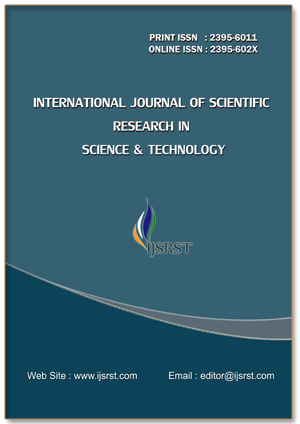Machine Learning Approach to Classification of Online Users by Exploiting Information Seeking Behavior
DOI:
https://doi.org/10.32628/IJSRST2512347Keywords:
machine, learningAbstract
The rapid growth of digital platforms has drastically transformed how users seek and interact with information online. Classifying online users based on their information-seeking behavior has become a crucial task in various domains such as personalized content delivery, online marketing, and user experience enhancement. This study presents a machine learning-based approach for classifying online users by analyzing their browsing patterns, query formulation strategies, click behavior, and session duration. Leveraging a dataset that captures detailed user interaction logs, our approach extracts relevant behavioral features and applies supervised learning algorithms to categorize users into distinct groups, such as navigational, informational, and transactional users. Feature engineering plays a significant role in translating raw behavioral data into meaningful input for machine learning models. Algorithms including Random Forest, Support Vector Machine (SVM), and Gradient Boosting were evaluated to determine their efficacy in this classification task. Evaluation metrics such as accuracy, precision, recall, and F1-score were used to assess the model performance. Experimental results reveal that behavioral features like click depth, query length, and dwell time have significant predictive power. The proposed system achieved an accuracy of over 85%, demonstrating its potential in real-world applications like search engine optimization and targeted advertising. This research contributes to the growing body of knowledge on behavioral analytics and machine learning, offering insights into user intent detection and profiling. The findings emphasize the importance of integrating behavioral science with data-driven techniques to enhance online systems' responsiveness and personalization capabilities.
📊 Article Downloads
References
Beitzel, S. M., Jensen, E. C., Chowdhury, A., Grossman, D., & Frieder, O. (2004). Mining search engine query logs for user behavior analysis. Proceedings of WWW.
Hassan, A., Jones, R., & Klinkner, K. L. (2013). A machine learning framework for predicting user intent from query logs. Information Processing & Management, 49(5), 1235–1253.
White, R. W., & Horvitz, E. (2009). Characterizing the influence of domain expertise on web search behavior. Proceedings of the 2nd ACM International Conference on Web Search and Data Mining, 132–140.
Liu, B. (2012). Sentiment analysis and opinion mining. Morgan & Claypool Publishers.
Joachims, T. (2002). Optimizing search engines using clickthrough data. Proceedings of the Eighth ACM SIGKDD International Conference on Knowledge Discovery and Data Mining.
Ricci, F., Rokach, L., & Shapira, B. (2015). Recommender Systems Handbook. Springer.
Breiman, L. (2001). Random forests. Machine Learning, 45(1), 5–32.
Chen, T., & Guestrin, C. (2016). XGBoost: A scalable tree boosting system. Proceedings of the 22nd ACM SIGKDD International Conference on Knowledge Discovery and Data Mining, 785–794.
Russell, S., & Norvig, P. (2020). Artificial Intelligence: A Modern Approach (4th ed.). Pearson.
Zhang, Y., & Pennacchiotti, M. (2013). Predicting purchase behaviors from social media. Proceedings of the 22nd International Conference on World Wide Web, 1521–1532.
Downloads
Published
Issue
Section
License
Copyright (c) 2025 International Journal of Scientific Research in Science and Technology

This work is licensed under a Creative Commons Attribution 4.0 International License.
https://creativecommons.org/licenses/by/4.0




